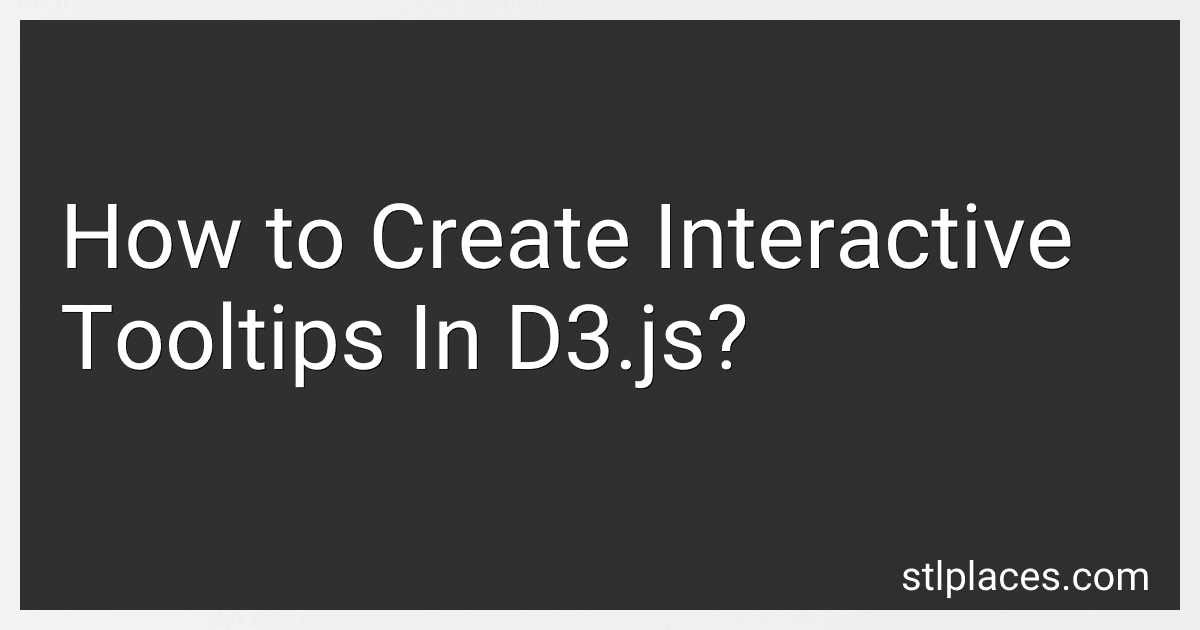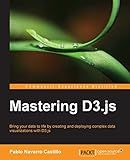Best Interactive Tooltip Tools to Buy in December 2025
To create interactive tooltips in D3.js, you can follow these steps:
- First, you need to create the tooltip HTML element on your webpage. This element will be initially hidden and will be positioned dynamically later on. Give it a unique ID or class for easy identification.
- In your JavaScript code, select the elements to which you want to attach tooltips. This can be done using D3.js selectors like d3.select or d3.selectAll.
- Use the .on() method to attach event listeners to the selected elements. For example, you might want to show the tooltip when the mouse pointer hovers over an element or hide it when the mouse pointer moves away.
- Inside the event listener functions, you can update the position and content of the tooltip based on the current mouse coordinates and the data associated with the selected element.
- To display the tooltip, set its display property to "block" or toggle a CSS class that makes it visible.
- Finally, to update the tooltip position, set its top and left CSS properties using D3.js. You can calculate the position based on the current mouse coordinates and adjust it as needed to ensure it doesn't go off-screen.
By following these steps, you can create interactive tooltips in D3.js that appear when hovering over elements and provide additional information or context to your visualizations.
How to create tooltips for scatter plots in D3.js?
To create tooltips for scatter plots in D3.js, you can follow these steps:
- Set up the SVG container for the scatter plot:
var svg = d3.select("body") .append("svg") .attr("width", width) .attr("height", height);
- Create the scatter plot points with data:
var data = [ { x: 10, y: 20, label: "Point 1" }, { x: 30, y: 40, label: "Point 2" }, ... ];
svg.selectAll("circle") .data(data) .enter() .append("circle") .attr("cx", function(d) { return xScale(d.x); }) .attr("cy", function(d) { return yScale(d.y); }) .attr("r", 5) .attr("fill", "blue");
- Create the tooltip element:
var tooltip = d3.select("body") .append("div") .style("position", "absolute") .style("visibility", "hidden") .style("background-color", "white") .style("padding", "10px") .text("");
- Add event listeners to the scatter plot points to show/hide the tooltip:
svg.selectAll("circle") .on("mouseover", function(d) { tooltip.text(d.label) .style("top", (d3.event.pageY - 10) + "px") .style("left", (d3.event.pageX + 10) + "px") .style("visibility", "visible"); }) .on("mouseout", function(d) { tooltip.style("visibility", "hidden"); });
In this example, the tooltip is initially hidden and is shown when the mouse hovers over a scatter plot point. The tooltip is positioned relative to the mouse position and displays the label for each point.
Make sure to adjust the styling and positioning of the tooltip element according to your preferences.
How to add tooltip animations in D3.js?
To add tooltip animations in D3.js, you can use the D3.transition() method to animate the tooltip.
Here's an example of how to add tooltip animations in D3.js:
- First, create a tooltip element and append it to the body of the document:
var tooltip = d3.select("body").append("div") .attr("class", "tooltip") .style("opacity", 0);
- Then, when binding data to your elements, add mouseover and mouseout event handlers to show and hide the tooltip, respectively:
var circles = svg.selectAll("circle") .data(data) .join("circle") .attr("cx", d => xScale(d.x)) .attr("cy", d => yScale(d.y)) .attr("r", 5) .attr("fill", "steelblue") .on("mouseover", function(d) { tooltip.transition() .duration(200) .style("opacity", 0.9); tooltip.html("Value: " + d.value) .style("left", (d3.event.pageX + 10) + "px") .style("top", (d3.event.pageY - 20) + "px"); }) .on("mouseout", function(d) { tooltip.transition() .duration(500) .style("opacity", 0); });
- Finally, you can apply animations to the tooltip by chaining transition() methods and using easing functions, duration, and delay. For example:
.on("mouseover", function(d) { tooltip.transition() .duration(200) .style("opacity", 0.9) .style("transform", "scale(1.2)") .style("background-color", "lightsteelblue"); // ... }) .on("mouseout", function(d) { tooltip.transition() .duration(500) .style("opacity", 0) .style("transform", "scale(1)") .style("background-color", "transparent"); });
In this example, the tooltip will animate the opacity, scale, and background color when it is shown or hidden.
Note: This code assumes you have already defined the SVG element and scales (xScale and yScale) for your D3.js visualization.
What is the role of event handlers in creating interactive tooltips in D3.js?
In D3.js, event handlers play a crucial role in creating interactive tooltips. Tooltips are small information boxes that are displayed when the user hovers over or interacts with an element on a webpage. Here's how event handlers help in creating these tooltips:
- Mouseover Event Handler: By using the mouseover event handler, you can detect when the mouse pointer moves over a specific element. This allows you to trigger the display of a tooltip when the user hovers over that element. You can use this event to show the tooltip and set its content based on the data associated with the hovered element.
- Mouseout Event Handler: The mouseout event handler is used to detect when the mouse pointer moves out of an element. When this event is triggered, you can hide or remove the tooltip, ensuring it disappears when no longer needed.
- Mousemove Event Handler: The mousemove event handler is useful for updating the position of the tooltip based on the current mouse pointer location. By continuously tracking the mouse movement, you can make the tooltip follow the pointer, providing a smooth interactive experience.
Using these event handlers, you can control the visibility, position, and content of tooltips dynamically based on user interactions with the elements in your D3.js visualization.



